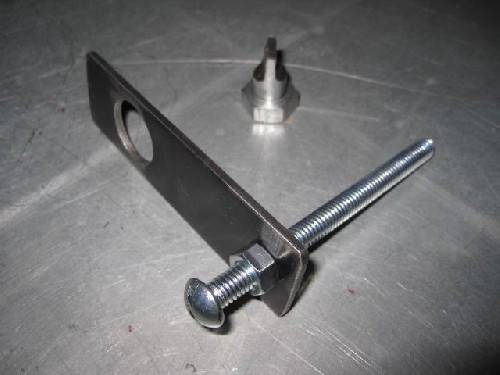Re: Rear Wheel Bearing Replacement
Posted by Owen_Dyneto On 2016/5/6 22:21:09
I assumed it's in the shop manual, sorry about that - probably such a common procedure that applied to many makes of cars that it wasn't thought necessary. You will find it in Motor's Manual, Chiltons, and most of the other standard auto service texts. And if you use the search tool here you'll probably find a dozen or more repeats of the procedure, e.g. search on "axle end play" or similar. In any case here it is briefly.
A tapered roller bearing MUST have a certain amount of free play to give long service life, typically no more than 0.005" and usually less. Too little and the large end of the rollers will gall and chip, too much and the damage will occur at the smaller end. Your rear axle has a tapered roller bearing at the end of each axle and the free play is set for the pair of axles as a unit - the total side-to-side axle movement. Check the specifications for your Packard and you'll find the exact specs, probably 0.004" to 0.007".
The rear axle needs to be off the ground at both ends and the parking brake needs to be released. Install your new bearing and seal, install the backing plate with whatever shims were already present, tighten it securely, and give the end of the axle shaft a good solid blow with a heavy hammer, being careful not to damage the threads - this will both insure that the bearing on the near side is seated on the race, and that both axles have been forced to the far side of the car. Now grab the end of the axle and pull it towards you - you should feel some in-and-out free play and this is the amount of movement you need to adjust by means of adding or subtracting shims between the backing plate and the axle housing. The adjustment can be done at either side so you might as well do it on the side you've replaced the bearing on. You can use a dial indicator, or some folks have made very simple little hand-made tools to make the adjustment via feeler gauges; enclosed courtesy of one of our contributors is an illustration of one such tool. Fasten via the large hole under the axle retaining nut. Push the axle IN and set the screw to just contact the backing plate. Then pull the axle out and use feeler gauges to measure the movement.
Attach file:
 (18.94 KB)
(18.94 KB)

A tapered roller bearing MUST have a certain amount of free play to give long service life, typically no more than 0.005" and usually less. Too little and the large end of the rollers will gall and chip, too much and the damage will occur at the smaller end. Your rear axle has a tapered roller bearing at the end of each axle and the free play is set for the pair of axles as a unit - the total side-to-side axle movement. Check the specifications for your Packard and you'll find the exact specs, probably 0.004" to 0.007".
The rear axle needs to be off the ground at both ends and the parking brake needs to be released. Install your new bearing and seal, install the backing plate with whatever shims were already present, tighten it securely, and give the end of the axle shaft a good solid blow with a heavy hammer, being careful not to damage the threads - this will both insure that the bearing on the near side is seated on the race, and that both axles have been forced to the far side of the car. Now grab the end of the axle and pull it towards you - you should feel some in-and-out free play and this is the amount of movement you need to adjust by means of adding or subtracting shims between the backing plate and the axle housing. The adjustment can be done at either side so you might as well do it on the side you've replaced the bearing on. You can use a dial indicator, or some folks have made very simple little hand-made tools to make the adjustment via feeler gauges; enclosed courtesy of one of our contributors is an illustration of one such tool. Fasten via the large hole under the axle retaining nut. Push the axle IN and set the screw to just contact the backing plate. Then pull the axle out and use feeler gauges to measure the movement.
Attach file:
 (18.94 KB)
(18.94 KB)
This Post was from: https://packardinfo.com/xoops/html/modules/newbb/viewtopic.php?post_id=176448